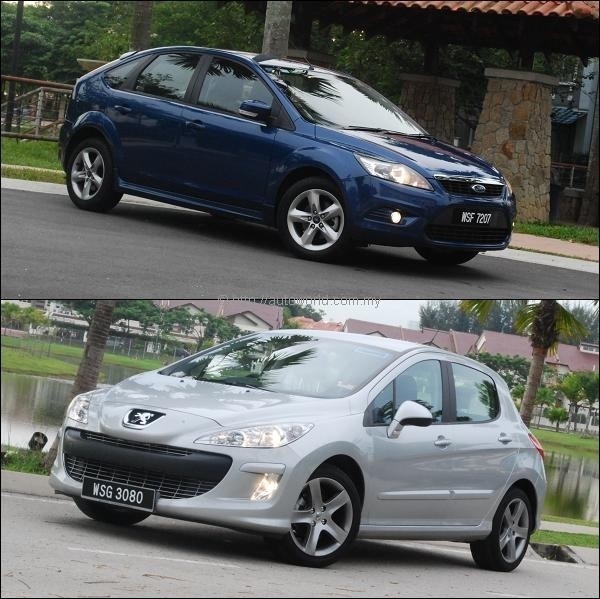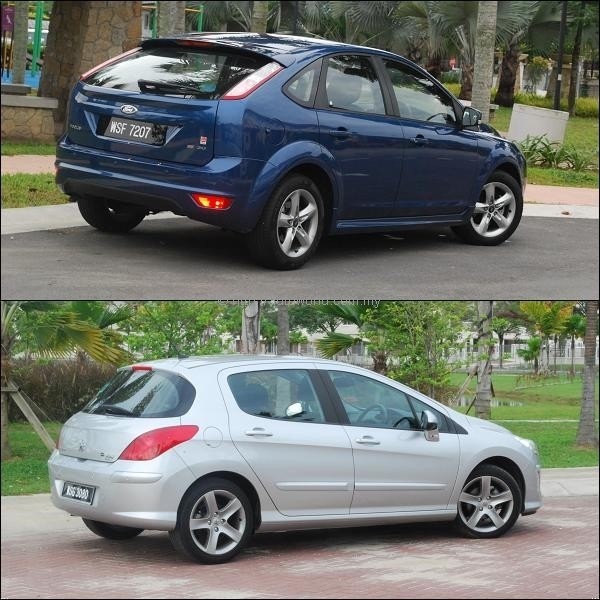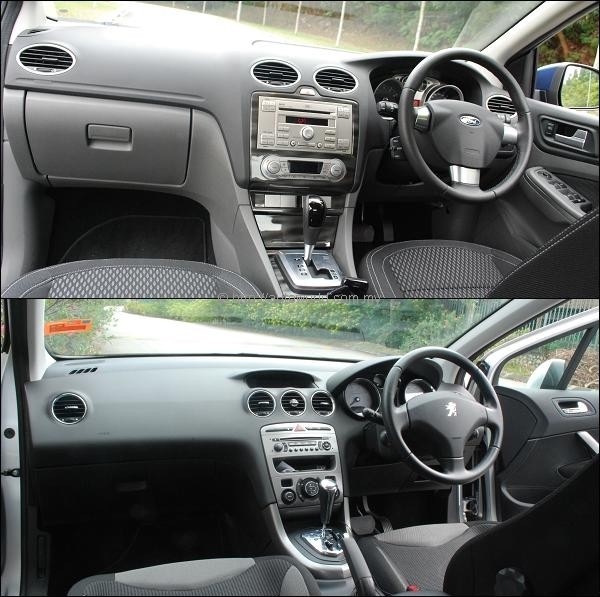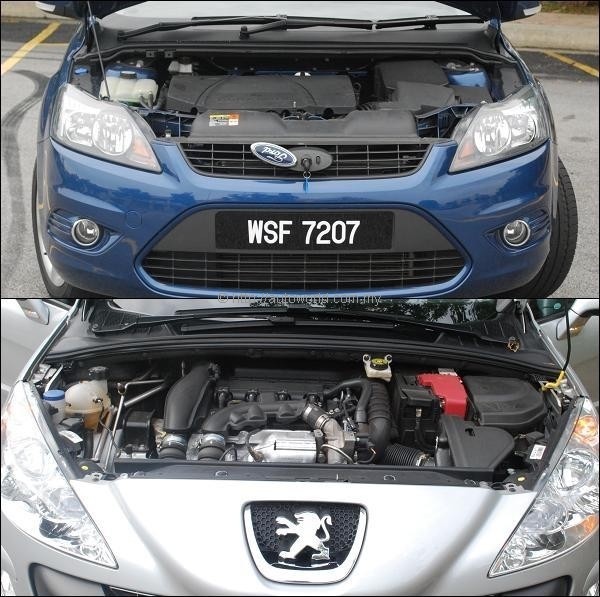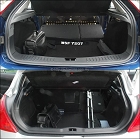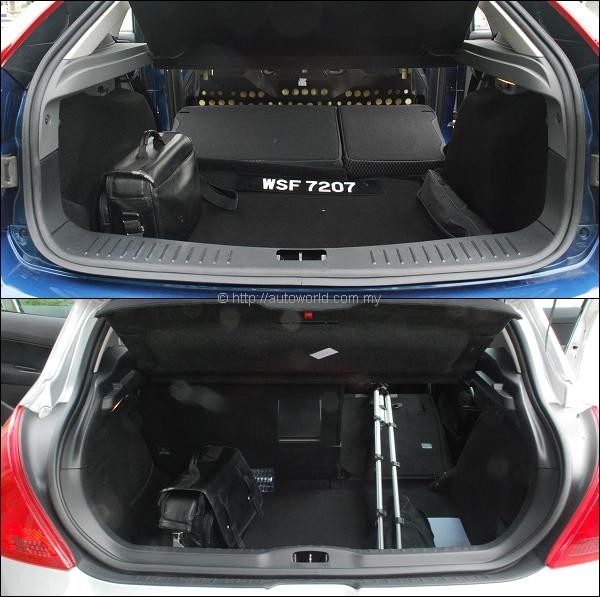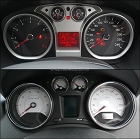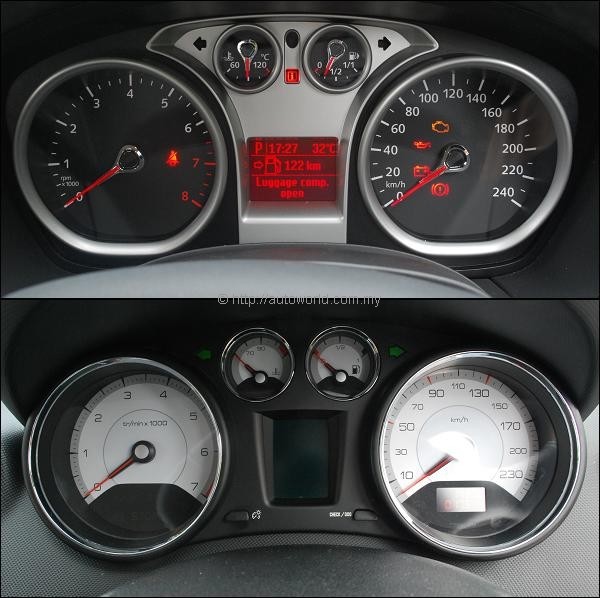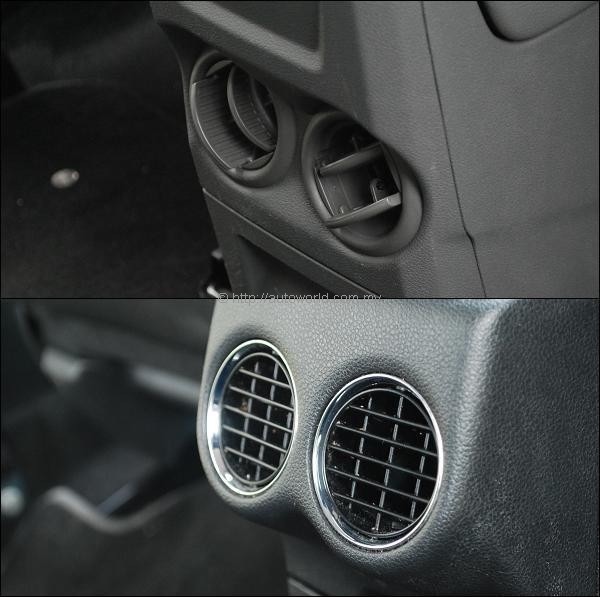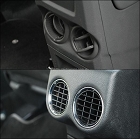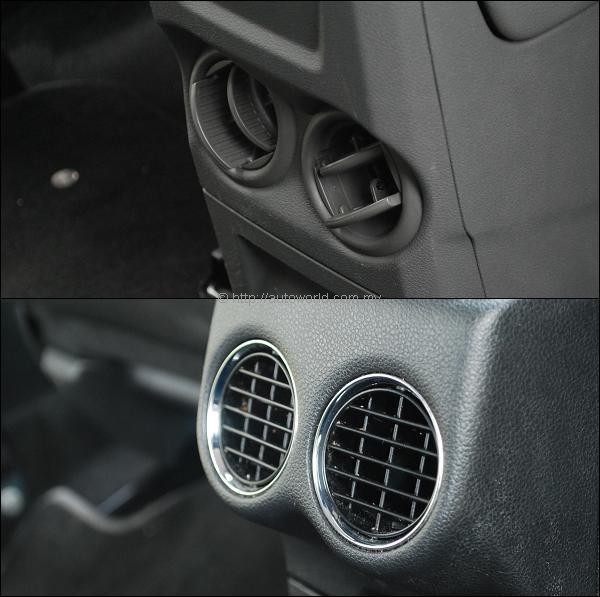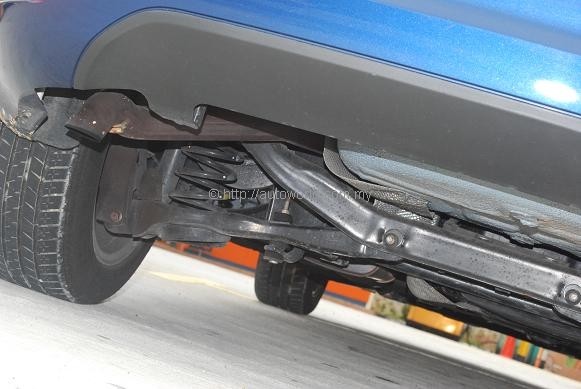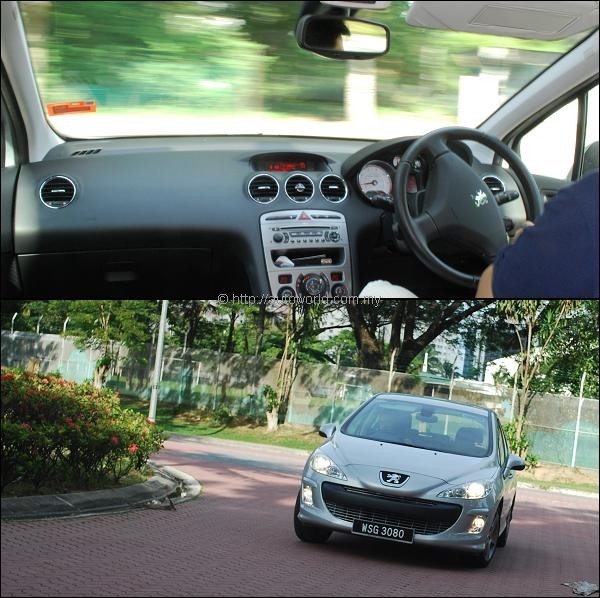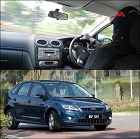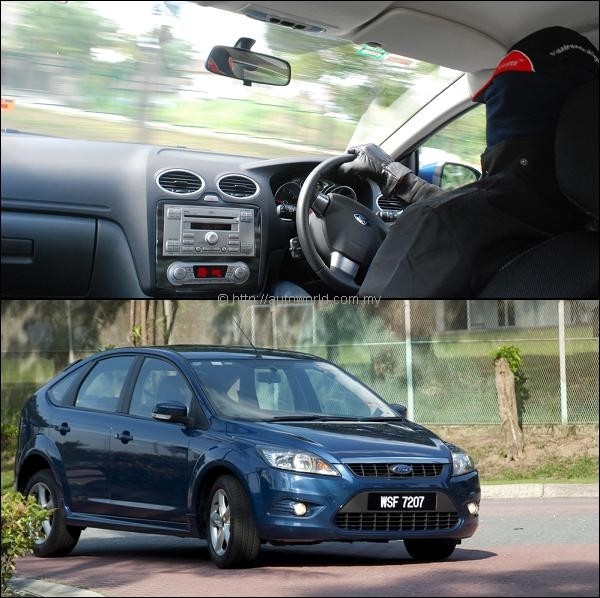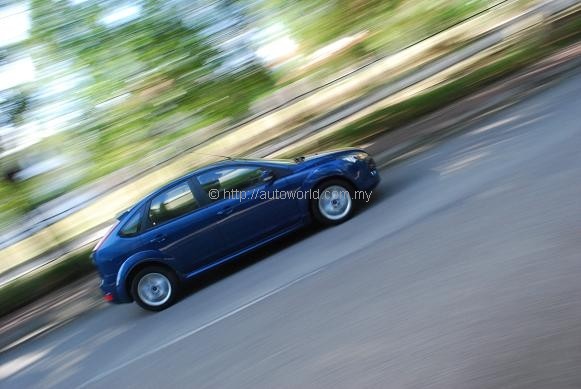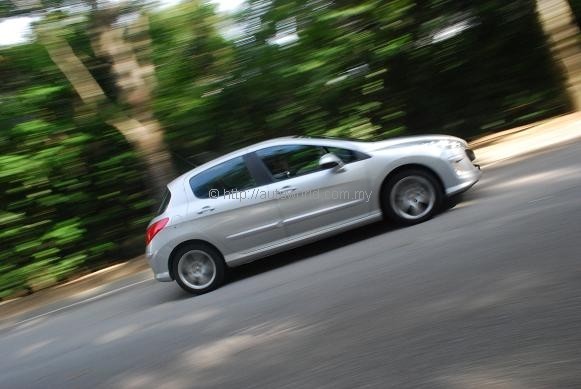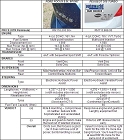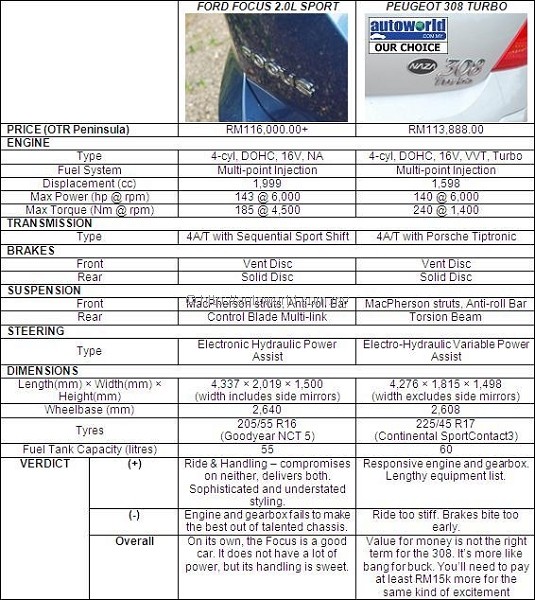When shopping for a car in the C-segment, the obvious choice is a Honda Civic. It is the benchmark of the segment, and it’s the one that your relatives would recommend. It ticks all the right boxes – space, practicality, image, performance, and even second hand value. I have just tested one recently, and there certainly is very little wrong with this car.
It’s not short on competition for sure. The next entries on the list of usually recommended choices are the Toyota Altis and the Nissan Sylphy. Both very sensible cars, and very much the mainstream choices. If, for you, a car is a tool for you to get from A to B, and that your primary concerns are practical – maintenance, fuel economy, space, comfort, and resale value – these are your three choices.
Going mainstream is good, especially if you are among the later buyers of the car. Because the car you’ve chosen have already been bought by so many people, you are not short on customer testimony to learn about its ownership experience. Also, because these cars sell in big numbers, suppliers stock a greater amount of parts – which then leads to lowered maintenance costs.
But the problem with going mainstream is that it does not set you apart. Going mainstream means you’re just among the masses. You’re following the herd. If the idea of buying what everybody else is buying does not excite you terribly, the aforementioned three options are immediately out. You are then left with choices like the Mitsubishi Lancer GT, the Mazda3, and the Hyundai i30.
That sums up offerings from Japan/Korea, but what about Europe? You must have come across brochures boasting about the “European-inspired styling” of their cars, but have you seen one that says “Japanese-inspired styling”? I suspect not. As competent as the Japanese and Koreans are in carmaking, there is still an intangible sense of prestige and refinement in driving a Continental car.
For many years, the prospect of driving a continental car is one that is associated with high price, high depreciation, and high maintenance to a degree that these cars might as well be labeled as financial black holes. However, in recent years, things have changed a bit. Our current duty structure has opened the door somewhat for affordable (a relative term in the Malaysian context, you understand) European cars.
In the aforementioned C-segment, we have a pair of very credible alternatives which have made their way here from Europe – the Peugeot 308, and the Ford Focus. In this specially arranged comparison test, we have pitted two of the closest matched variants of both models against each other.
The Test Cars
Flying the Blue Oval’s flag is the five-door hatchback version of the Focus, which Ford calls the Focus 2.0 Sport. Our test car is painted in the Focus RS-aping Racing Blue shade. Those thinking of a bodykit conversion will have a headstart by choosing this colour.
Sime Darby Auto ConneXion quotes a price of RM112,888.00 for this version of the Focus, but once all the insurance, road tax, and registration payments are factored in, the figure (estimated based on Autoworld’s road tax & insurance calculators) is set to exceed RM116,000.00.
Coming out from the Lion’s Den is the 308 Turbo – the higher specced version of the model. Our test car is finished in a shade of silver which Peugeot simply calls as Aluminium. It is also one of the earlier registered media units, which does not feature the moonroof available in the more recent units of the Turbo.
When launched, our test car cost RM111,000 on the road inclusive everything. This spec level is no longer available for sale, and what you get from Nasim now comes together with the aforementioned moonroof at RM113,888.00 OTR with insurance, road tax, and registration.
The Specs Sheet
Ol’ Henry may have founded his company in Detriot, but the Focus was designed in Cologne, Ford Europe’s HQ. Therefore, it has as much claim as the 308 for being a proper Continental car. Despite the polar opposite nature of their characters, they are indeed very closely matched in several aspects.
You would have noticed that the 308 starts the contest with a price advantage of over RM2,000 against the Focus. This situation is mainly due to the local assembly of the Peugeot, whereas the Ford is fully imported from the Philippines. When stretched over a loan tenure, RM2,000 is not much of a difference, but as we went through the specs sheet, this price difference proved detrimental to the Ford.
Both cars produce in the region of 140hp, but with very different means. The Focus goes the path of natural aspiration and bigger displacement. According to claimed figures, the 1,999cc four-pot of the Focus produces 143hp @ 6,000rpm and 185Nm @ 4,500rpm. Hardly figures to set pulses racing, but good enough for day-to-day applications.
The 308 Turbo, with 401cc less than the Focus, has to contend with a slight horsepower deficit, producing 140hp @ 6,000rpm, but its use of forced induction has endowed it with a significant advantage in torque – all 240Nm arriving at a mere 1,400rpm. As is the norm in this segment of the market, transmissions are automatic only – both offer 4-speeder slushboxes with manual override.
In terms of equipment, both cars are well equipped with dual zone climate control, rear blowers, IPod connectivity, and a digital trip computer. However, Peugeot is able to offer a far lengthier list of equipment on the 308 which the Focus can only dream of – auto wipers, auto headlights, cruise control, fragrance dispenser, and photosensitive rear mirror, just to name a few.
The Focus heads into this test at a disadvantage, but we’re not writing it off yet. Though the on-paper comparisons favour the 308, we know from other reviews (and not to mention awards) that the Focus is too competent a car to be dismissed. The game’s afoot.
Looks
Despite setting out to capture a similar target audience, the 308 and the Focus go about their business in very different ways. This difference in stance is reflected in the way they are styled as well. Where the Ford is pleasing to your eyes with clean and understated lines, the Peugeot grabs them with strong curvatures and powerful design cues. In celebrity terms, we can liken the Focus to Michelle Reis with her classy and timeless beauty. The 308, with all its swooping curves is pretty much Megan Fox in comparison.
The Focus’ recent styling update has brought it inline with Ford’s trapezoid-dominated Kinetic design language. As far as the hatchback variant is concerned, the changes are almost seen exclusively from the front, with the swept back headlights and the inverted grille the most prominent features.
The smoked headlamps provide differentiation with the sedan version, and look very well done when seen from upclose. In contrast to recent trends among manufacturers to sprinkle chrome on almost every corner of the car, the Focus eschews use of the bling-bling bits. That’s very refreshing (or cost cutting?), but that Kinetic grille would look a lot better if its frame is accentuated by a strip of the shiny stuff.
The Focus Sport’s C-pillar mounted taillights, as before, visually integrate with the rear windscreen. Then, just as the taillight assembly ends, the tail is chopped off vertically. It’s a trademark Ford Focus design cue, but it also happens to leave the lower half of the tailgate looking woefully blank. It’s as if as the designers ran out of ideas when after they were done with the windscreen and taillights. I’m going against convention here, but I much prefer the rear fascia of the Focus sedan. The 16″ rims, shod in 205/55 Goodyear NCT5 rubber, also seem like a loose fit in those flared wheel arches.
Where the design language of the Focus is of (very) understated aggression, the 308 has no qualms in showing off all its flair and curves. It’s a good looking car like the Focus, but appealing to different tastes. Next to the more matured and refined-looking Ford, the Peugeot’s loud design cues and smiley face front looks makes it look almost cartoonish by comparison.
Out on the streets, driving the Focus would get you a couple of admiring glances. Its sophisticated styling and relatively low numbers on the road might gives the impression that it’s more expensive than it really is. The 308, meanwhile, is far more outstanding. It gets you not glances but stares and heads turn as you drive past. While the subject of which car being better looking is open to debate and discussion, but when parked side-by-side, there’s no doubt that there would be more phone-cameras pointed at the 308 than the Focus.
Touch & Feel
As we take a closer look at the interior we see the Focus receive its first blow from the 308. The Focus’ cabin is well laid out, make no mistake about that, but compared to that of the 308, it’s severely lacking in both the subjective element of flair, and the more objective comparison of quality.
It’s not shabbily built by any standards, but materials used by the fully imported Focus seemed to be of a few leagues lower than those used in the locally assembled 308. Panel gaps also appear to be closer and more consistent in the Peugeot compared to the Ford.
An integral part of Malaysian car showroom culture is the ‘door test’, where visitors open and close the doors of the car, paying attention to the sounds made in the process. We have no idea how this test would ultimately influence a car buyer’s decision, but if it does, Ford needs to be worried for the Focus. The front doors open and close fine, but the rear doors close with a very hollow and unconvincing thud, in contrast to the 308, where all four doors close with unmistakable solidity.
The most obvious contrast in the build quality of these two cars come in the gear levers. Ford got the arrangement of the ‘+’ and ‘-‘ slots in manual override correctly (pull-upshift, push-downshift), unlike the Peugeot, but overall, the Focus’s button-operated lever slots into positions a lot less confidently than the 308’s gated shift.
On the equipment front, the Focus once again finds itself edged by the 308. Both make do without leather seats, but as far as this writer is concerned, no leather seats, even at RM110k-plus is no deal-breaker. Neither is making do without cruise control, individual seat belt indicators and auto headlamps, all features found on the 308, but not on the Focus. However, if you are already paying the same amount, you would presumably want more toys at your disposal.
At this stage, things look very worrying for the Ford, as the Peugeot takes a decisive edge in this contest. The 308 already has a lengthier equipment list to start with (thanks to its local assembly origins). While we can always argue that styling is subjective, build quality is not. For all the dissatisfaction of quality problems of the 308 publicized in our forums, everything in it looks and feels much better built than the Ford.
Things certainly didn’t look too good for the Focus on the brochures and also on the showroom floor. However, as we all know, the real battle in a road test takes place on the road, which is where we’re heading. Can the Ford salvage the match?
Behind the Wheel
As we hit the road, the 308 made all 55Nm of its additional torque over the Focus felt immediately, with the respective transmissions serving to further widen the chasm. Although both channel power to the front wheels via a 4-speed automatic gearbox, the one on the Focus felt noticeably slower and more sluggish.
Not helping the Focus’ case is the coarse and unrefined nature of the Duratec engine at high revs past its peak torque marker of 4,500rpm. Combined with the hesitant kickdown response of its gearbox, overtaking in the Focus is not an appealing affair. Using manual mode helped very little, as the gearbox occasionally takes up to 1-2 seconds before it responds to the driver’s input.
In contrast, flooring the pedal in the 308 produces near instantaneous response. Running on Porsche’s Tiptronic software, the 308’s transmission kicks down much more readily than the Focus’ unit. The Prince engine proved to be smoother and more willing revver than the Ford’s Duratec. Perhaps having half-Bavarian parentage helped? It even has a little trick up its sleeve – releasing the throttle at above 2,500rpm produces the unmistakable hissing sound of a turbo blow-off valve. Not very mature, but a little source of amusement I constantly indulged myself with throughout my time with the 308.
Thus far, the 308 has been comfortably dominant and had pinned the Focus on its backfoot for most of the contest. So, it was indeed a massive surprise to find both cars tied very closely in its 0-100kph times. Over repeated tests, both averaged 11 seconds, with the best times of 10.8 recorded for both cars. Considering the clear superiority of the 308’s powertrain setup, we certainly did not expect the Focus to have been able to peg the 308 back on this part of the contest.
From this point forward, the Focus’ fortunes began to improve, though the 308 wasn’t about to relinquish its advantage. The Peugeot’s brakes bite harder than the Ford’s, but it’s a lot trickier to modulate – it’s almost as if as the 308 has a brake switch rather than a pedal. Bringing the 308 to a smooth stop requires some measure of delicacy.
As the contest progressed, we found that the Focus to be a far smoother car to drive than the fidgety 308. When we showed the car some twisted roads, we had inadvertently opened the door for the Focus to mount a spectacular comeback into the contest. As far as ride & handling is concerned, the Focus completely outclasses the 308.
Now, this is not to say that the 308 isn’t a competent handler. It is. Shod with 225/45 R17 tyres, and with a stiffer suspension setup compared to the Ford, the 308 can, on some occasions, corner harder and faster than Focus. But this comes at a serious price – comfort.
While it is probably fair to assume that the crowd looking at a 308 Turbo is likely to put cornering prowess above comfort in their list of priorities, but the fact is that the Focus sacrificed a lot less comfort than the 308 to achieve similar levels of handling levels.
Ford’s insistance on using the renowned Control Blade multi-link rear suspension instead of the 308’s torsion beam setup sees the Focus reaping handsome dividends in its ride and handling balance. Surface irregularities that are dismissed with nonchalant ease by the Focus are transmitted, undiminished, into the cabin of the 308.
No doubt, the 308 is more addictive to drive on the straights, but on twisted roads, the car you’d want to take is the Focus. Where the 308 launches itself from corner to corner with the mountain of torque at its disposal, the Focus just flows along with remarkable smoothness. The only complaint on the Focus is that its steering lacks weight compared to the 308 – which is great for parking, but a little less inspiring when cornering hard.
Our pick between the two is that the Focus is the better driver’s car. Its torque deficit against the 308 did not prove to be an issue, but its transmission certainly did. The Focus still wins this portion of the contest, but the hesitant and dimwitted nature of its gearbox prevented a more emphatic victory.
Conclusion
After falling behind early on, the Focus staged a remarkable comeback to close in on the 308. At one stage, the 308’s lead appeared almost unassailable – for a slightly lower price tag than the Focus, the 308 offers the same European driving pedigree, a half-BMW engine, and a lengthier equipment than the Ford.
Even hindered by a lack of grunt, and a sluggish gearbox, the Focus somehow still emerges from this test as the better car to drive. Many manufacturers, in the pursuit of capturing the enthusiastic crowd with the promise of dynamic handling go the route of making the car stiffer and less comfortable just so that it can corner faster, flatter, and harder. Not so the Ford. It manages to both ride AND handle well at the same time – a rare combination indeed.
On its own, the Focus is a good buying preposition, one which we have absolutely no qualms of endorsing the purchase of. Unfortunately for Ford, they have left too many chinks in the Focus’ armour, chinks which the 308 exploited mercilessly. The Focus is the sweeter drive, and would be my personal choice between the two on the sheer strength of its handling prowess and balance, but when the overall package is considered, there really is only one winner – it’s the Peugeot 308.
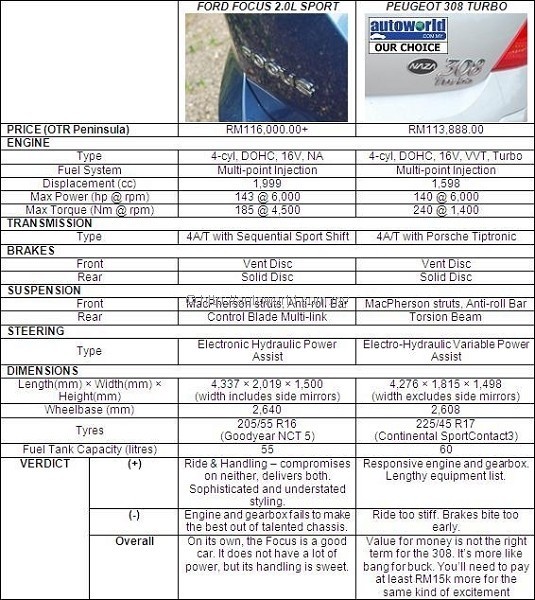 |
Photography by: Kon & Trius Blades
Special thanks to: T. Jye
The post Contrasting Alternatives: Ford Focus vs Peugeot 308 appeared first on Autoworld.com.my.
